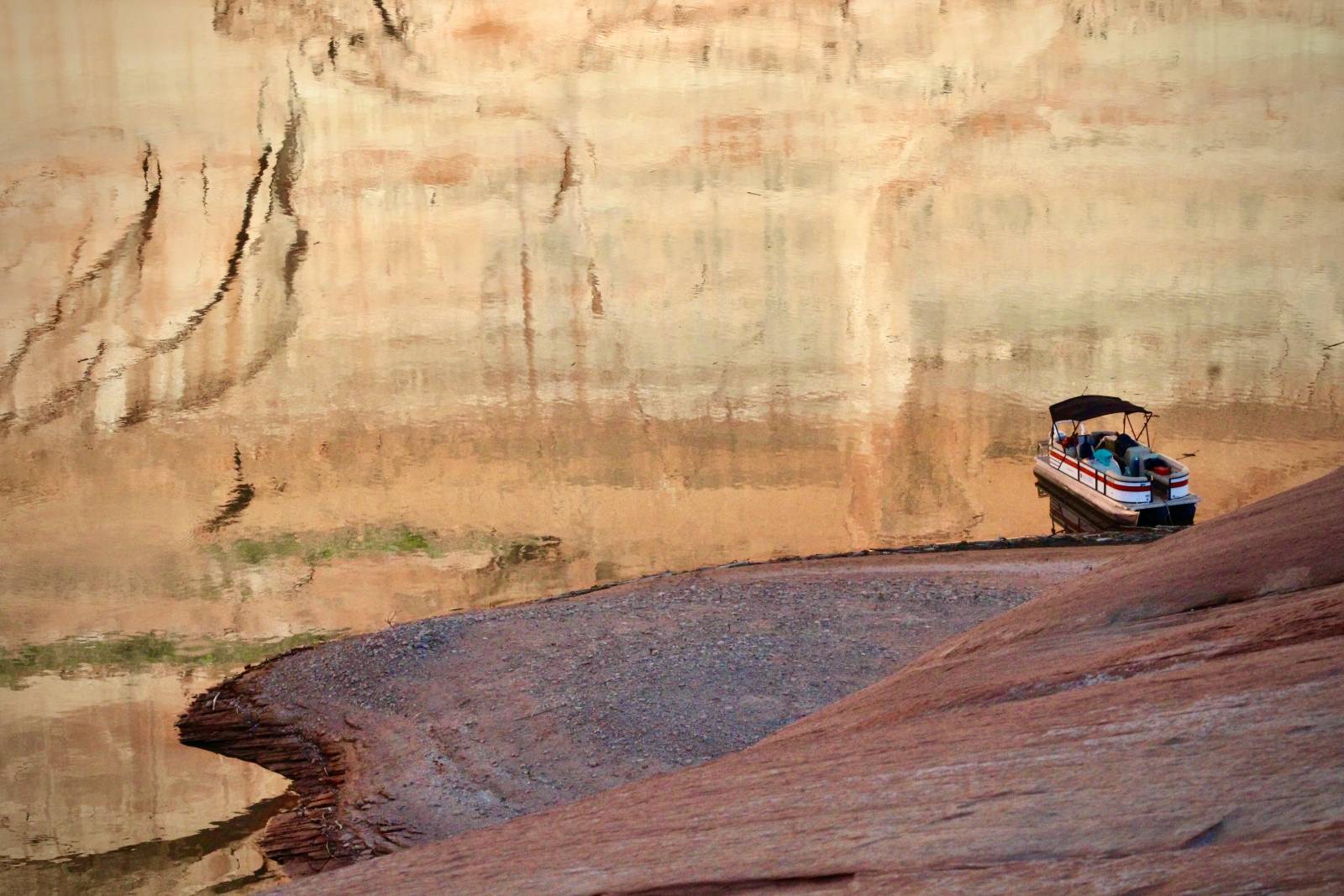As the nation’s second-largest reservoir recedes, a once-drowned ecosystem emerges

If you want to see the Colorado River change in real time, head to Lake Powell.
At the nation’s second-largest reservoir, water levels recently dipped to the lowest they’ve been since 1968. As the water recedes, a breathtaking landscape of deep red-rock canyons that cradle lush ecosystems and otherworldly arches, caverns and waterfalls is emerging.
On a warm afternoon after the reservoir had dipped to a record low, Jack Stauss walked along a muddy creek bed at the bottom of one of those canyons. He works as the outreach coordinator for Glen Canyon Institute, a conservation nonprofit that campaigns for the draining of the reservoir and highlights the natural beauty of Glen Canyon, which was flooded in the 1960s to create Lake Powell.
“I call this the moon zone,” Stauss said, as his shin-high rubber boots splashed through cold pools …